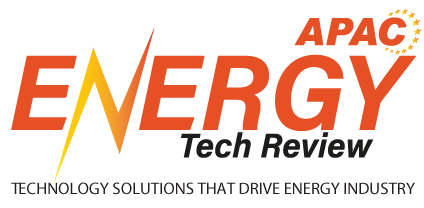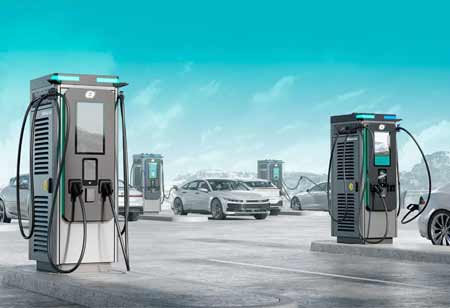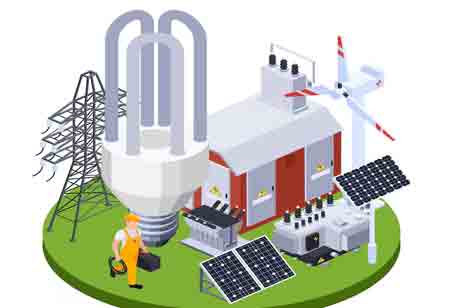CLOSE
Specials
I agree We use cookies on this website to enhance your user experience. By clicking any link on this page you are giving your consent for us to set cookies. More info
Be first to read the latest tech news, Industry Leader's Insights, and CIO interviews of medium and large enterprises exclusively from Energy Tech Review
Thank you for Subscribing
Energy Transformation: Exploring Large-Scale Storage Options
Renewable energy sources, advancements in battery technology, and emerging technologies like AI, machine learning, blockchain, and modular systems are driving significant transformation in the energy sector.

By
Energy Tech Review | Friday, December 05, 2025
Stay ahead of the industry with exclusive feature stories on the top companies, expert insights and the latest news delivered straight to your inbox. Subscribe today.
FREMONT, CA: The energy sector is undergoing a significant transformation due to the growing use of renewable energy sources like solar and wind power, necessitating large-scale energy storage solutions to maximize their potential.
Trends Shaping the Energy Storage Landscape
The energy storage sector is undergoing rapid transformation, driven by advancements in battery technologies, integration with renewable energy sources, and the development of innovative storage solutions.
Advancements in Battery Technology: Lithium-ion batteries remain the cornerstone of energy storage, with ongoing research enhancing their energy density, lifespan, and safety. Meanwhile, solid-state batteries are emerging as a promising alternative, offering superior energy density, faster charging, and improved safety features. Flow batteries, which use liquid electrolytes for energy storage, are also gaining traction for their scalability and suitability for long-duration applications.
Integration of Renewable Energy Sources: The pairing of energy storage with renewable energy systems is becoming more prevalent. Solar-plus-storage solutions enhance energy independence and grid stability, while wind-plus-storage systems address the intermittency of wind power, optimizing grid operations.
Grid-Scale Energy Storage: Utility-scale battery systems are deployed to manage grid loads, regulate frequency, and provide essential grid services. Virtual power plants (VPPs), which aggregate distributed energy resources like batteries, further enhance grid flexibility and reliability.
Second-Life Batteries: Repurposing batteries from electric vehicles and other applications extends their lifecycle and mitigates environmental impacts. This trend supports sustainability while addressing the growing demand for energy storage.
Innovative Storage Technologies: Beyond batteries, other technologies are reshaping the landscape. Thermal energy storage systems capture heat or cold for heating, cooling, and industrial applications. Compressed air energy storage (CAES) utilizes compressed air to drive turbines. In contrast, pumped hydro storage, a traditional yet reliable method, continues to provide large-scale energy storage by leveraging water reservoirs.
Emerging Trends and Innovations
The energy storage sector is witnessing transformative advancements driven by cutting-edge technologies and innovative business models. Artificial intelligence (AI) and machine learning (ML) are transforming the optimization of energy storage systems, enabling accurate energy demand predictions and enhancing grid integration. Blockchain technology is emerging as a key enabler, providing improved security and transparency for energy trading and storage systems. Modular energy storage systems are gaining traction due to their flexibility and scalability, making them ideal for diverse applications. Furthermore, the "Energy Storage as a Service" (ESaaS) model is reshaping the industry by offering customers access to energy storage solutions without requiring substantial upfront investments.
Policy and Regulatory Landscape
Policy and regulatory frameworks are pivotal in the adoption and integration of energy storage technologies. Government incentives and subsidies remain critical drivers, providing financial support to accelerate deployment. Grid operators are increasingly crafting regulations to address the challenges and opportunities associated with higher energy storage penetration. Simultaneously, innovative market designs are essential to enable energy storage systems to participate effectively in various grid services and markets, ensuring a more resilient and efficient energy ecosystem.
The swift advancement of large-scale energy storage systems will profoundly transform the energy sector. By mitigating the intermittency challenges of renewable energy sources and bolstering grid resilience, these technologies are laying the foundation for a sustainable and dependable energy future. As ongoing research and development expand the frontiers of innovation, increasingly sophisticated and cost-effective solutions are expected to accelerate the global shift toward a low-carbon economy.

Copyright © 2025 Energy Tech Review. All rights reserved






